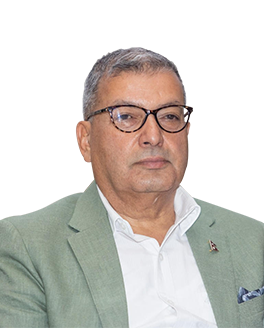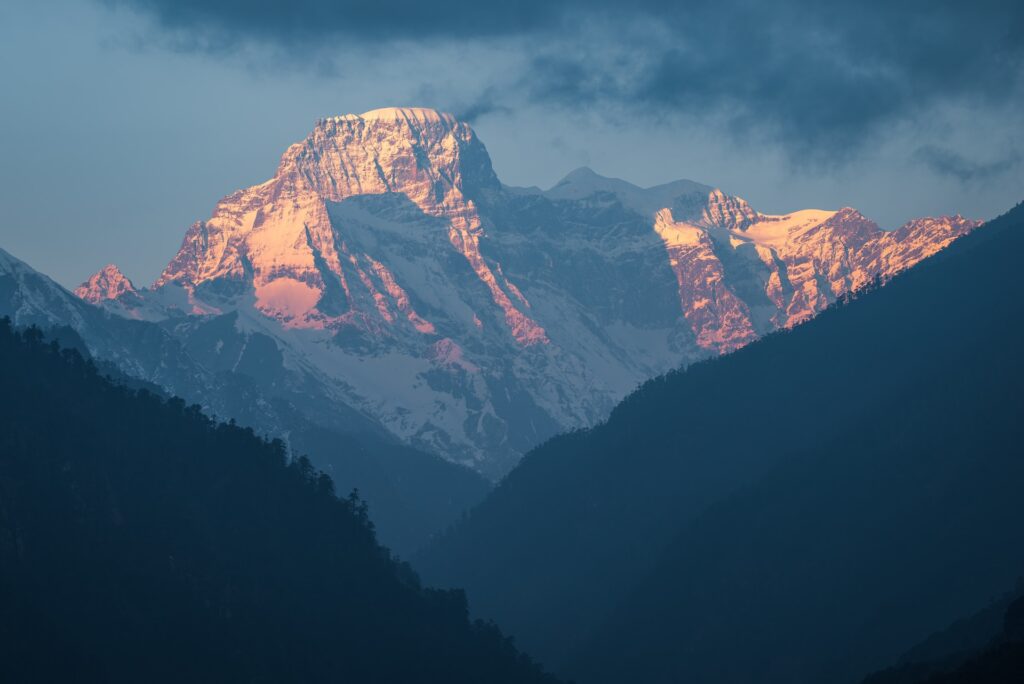BEAUTIFUL LAYA GASA TREK
BEAUTIFUL LAYA GASA TREK

Talk With Expert
- +977-1-5591234 / 9851104568
- info@prestigeadventure.com / pdamber@yahoo.com
OVERVIEW
The classic 19-day Laya Trek gives you the luxury of experiencing the ultimate trekking adventure off the beaten track with a variety of acclimatized conditions. Synonymous with warm hospitality and a spot for trekking, Laya is the perfect center to capture a complete picture of Bhutan; you can taste Bhutan’s famous butter tea, yak milk and local wine, watch a cultural show and be a silent witness of authentic Bhutanese culture and customs.
On the way to Laya, the hiking trail passes through Shana Camp, Soi Thangthangkha, Jangothang, Lingshi, Chebisa, Shomuthang, Robluthang and Limithang. You can’t help but immerse yourself in the quiet and strangeness of nature. Further afield, you follow Koina, Gasa hot springs, Goen Damji and Tashithang on a network of well-maintained trails strewn with rocks. Each destination has its own unique characteristics:
Unique geographical features, surreal mountain vegetation, picturesque villages, dzongs, open grasslands, indigenous people, art and history are juxtaposed against the backdrop of isolation and simplicity. Bhutan’s uniqueness. The Gasa Tshachu hot tub is an added amenity that will make your trip memorable and undeniably enjoyable.
ITINERARY
-
Day 1 Arrive Paro
On your arrival at Paro Airport, you will be received by your tour guide and escorted to hotel. Dinner and overnight at hotel in Paro.
-
Day 2 Paro Excursion
Morning: Visit Drugyal Dzong (a ruined fortress – 16 Kms. away from Paro town). Although in ruins, this Dzong is of great historical importance. It was here that the Bhutanese finally defeated the invading Tibetans and drove them back. From here, the peak of Chomolhari “Mountain of the goddess” can be seen on a clear day Alt. 7,329m/24,029ft.). On the way back you visit a typical Bhutanese farmhouse.
Visit the Rinchen Pong Dzong. This massive fortress is located on a small hill just above the Paro River (Pachu) in the Paro valley. You have to walk about 15 minutes by crossing an ancient wooden bridge built in typical Bhutanese architect. The Dzong houses the District Administration office and the District Monk Body. It was built in 1645 AD.
Lunch in the hotel. After lunch, visit the National Museum (Ta-Dzong). This was actually the Watch Tower of the Paro Rinchen Pong Dzong. It was converted to the National Museum in 1968.
Visit Kyichu Lhakhang (Lhakhang means Monastery). Kyichu Lhakhang was built in 659 ADS by the King Songtsen Gampo of Tibet as one of the 108 such Monasteries which he built in various places to spread Buddhism. It is located between Paro Town and Drugyal Dzong. It is one of the holiest places in Bhutan as it marks the advent of Buddhism in the country.
Evening: Reception by our tour operator with cultural show. Overnight in hotel.
-
Day 3 Trek to Shana
Drive up to Drugyal Dzong, where the road ends and start the trek by following the river gently uphill through a narrowing valley of paddy fields. You will find plenty of traditional farm houses in a purely rural setting. The campsite is just beyond an army outpost at Alt. 2800m, Distance – 17km and time 5-6 Hours.
-
Day 4 Soe Thangthangkha
Continue trek uphill through the river valley which narrows and closes in after some distance. The trail then winds up and down along the drainage. Most of the trail actually is downhill after the initial climb. The campsite is located in a meadow with stone shelter. Alt. Approx. 3400m, distance 15km, time 4-5 Hours.
-
Day 5 Jangothang
Walk up along the Pachu (Paro River), pass a small army outpost where the valley begins to widen again. You can now clearly view the high ridges and the snowcapped mountains all around and also see the yaks and the yak herders’ winter homes. Camp beneath a ruined fortress at the base of the Jomulhari mountain. Alt. 4040m., Distance 19 km and time 5-6 Hours.
-
Day 6 Lingshi
Walk up toward the pass through a wide pasture land. Depending on the season you are there, you might find some yak herders in their camping tents along the way. As you come down after the pass to the Lingshi basin, you will see some beautiful views of the Lingshi Dzong and the valley and also Tserim Kang (mountain) and its descending glaciers at the north end of the valley. Camp in a stone shelter with a built-in fire pit or in the tent. Alt. 4150m. Distance 19 km. Time 5-6 Hours.
-
Day 7 Chebisa
Today is the shortest walking day and you can really take it easy. On reaching the campsite at Chebisa, you can visit the village houses.
Alt. 3850m and distance 12km about 3-4 Hours.
-
Day 8 Shomuthang
(Distance 17km and about 5-6 Hours walk).
You walk through a wide pasture land towards Gobu-la (pass). On the way, you will see few people herding the yaks. After crossing the Gobu -la (Alt. 4350m) descend down to the valley. The campsite is on a bench above a river which is a tributary of the Nochu river at Alt. 4260m.
-
Day 9 Robluthang
(Distance 15km and about 6-7 Hours).
Today is a strenuous trek; therefore, we need start early. After crossing the Jerela (pass) Alt. 4600m, you come down to Tsharijathang valley where you can normally see herds of Tarkins. Camp at Tsharijathang at Alt.4390m.
-
Day 10 Lemithang
(Distance 19km. and about 6-7 Hours walk)
After crossing the Shingela pass, alt. 4900m., you come down and follow the valley. Lemithang is under the Laya District and you will see people dressed in typical Laya costume with long pointed bamboo hats on their head. Camp at Lemithang at Alt. 4140m. If you have time, it would be advisable to spend a day here exploring the valley and meeting the people who have a different and unique culture.
-
Day 11 Laya
(Distance 10km and about 3-4 Hours walk).
Today, we walk all the way downhill along a narrow winding river valley. The trail leads you to the west side of Laya village. Campsite is on a high flat bench above the Laya village at Alt. 3850m.
-
Day 12 Laya at Leisure
Rest whole day and explore the Laya village.
-
Day 13 Koena
(Distance 19km, about 6-7 Hours walk).
The trail winds up and down along the river valley avoiding natural obstacles and affording breathtaking views of the crashing river, feeder streams and waterfalls. Camp at Alt. 3800m.
-
Day 14 Gasa
(Distance 17 km. about 6-7 Hours walk).
We cross the Babela pass at Alt.3740m. Then the trail is all the ways downhill till you reach the campsite which is close to Gasa Dzong at Alt. 2900m.
-
Day 15 Gasa Tsachu (hot spring)
After a late breakfast, trek to Gasa Tsachu. After lunch relax in the hot spring. The Gasa Tsachu is one of the most popular hot springs in Bhutan. Camp at Gasa Tsachu.
-
Day 16 Geon Damji
(Distance 21 km. about 6-7 Hours walk).
After a short climb, the trail winds through the rolling hills and passes through the pine and oak forests, villages and wheat fields. You will also see a beautiful view of the Gasa Dzong glued to the valley wall seeming to float in space camp at Alt. 2280m.
-
Day 17 Tashithang
(Distance 17 km. about 6-7 Hours walk).
The trail descends from the high agricultural benches above the Mochu (Chu means River) into a lush semi-tropical gorge filled with banana trees, creepers and various tropical vegetation. You will also see monkeys and few other animals occasionally. Camp at Tashithang at Alt. 1700m.
-
Day 18 Khuruthang
After a short walk to the road, drive down to Punakha valley. Stop at Punakha and visit the Punakha Dzong. Punakha was the former capital of Bhutan. The Dzong lies between two rivers known as Phochu and Mochu which means ” Male River and Female River “. It was built by Shabdrung Ngawang Namgyel the founder of Bhutan in 1637 AD and is one of the most important and historical Dzongs in Bhutan. In the Dzong are kept the sacred remains of Pema Lingpa and Shabdrung Ngawang Namgyel. The Dzong now houses the District Administration office and the winter residence of the state Monastic Body and its Chief Abbot. Lunch in Punakha. After lunch, drive to Thimphu, 77 km. approx. 3 Hours. Overnight in hotel.
-
Day 19 Thimphu Sightseeing
Visit the Memorial Chorten (a huge stupa) built in memory of the third king of Bhutan who reigned the Kingdom from 1952-1972.
Visit the National Library where ancient manuscripts are preserved.
Visit the Wood Craft and Painting school where traditional arts and crafts are still kept alive. Visit the Handicrafts Emporium where Bhutanese textiles and other arts and crafts are displayed and can be purchased.
Visit Simtokha Dzong. This is one of the oldest fortresses in Bhutan. It was built in 1629 AD. It houses the largest monastic schools in the country.
Visit Tashichho Dzong, the main secretariat building. This massive structure houses part of the government Ministries, the office of the King and the Throne hall. It also houses the State Monastic Body and the living quarters of the Chief Abbot and the Senior monks. Overnight in hotel in Thimphu.
Evening: at leisure and dinner at hotel.
-
Day 20 Thimphu and Paro
Drive to Dechencholing 6km from Thimphu town to view the Queen Mother’s Palace from the outside. You can take pictures of the Palace and the Dechencholing Monastery from the outside only. Drive back to Thimphu and take a leisurely stroll in the market. After lunch, drive to Paro. 65km. about 2 Hours drive. Overnight in hotel.
-
Day 21 Taktsang Monastery
Drive up to Satsam Chorten (10 km from Paro town) and from there walk up to Taktsang Monastery. The name Taktsang means “Tiger’s Nest “. The Monastery is perched on a rocky ledge with a sheer drop of nearly 4000ft. and overlooks the Paro valley and the river. It is said that in the second half of the 8th century, Guru Padma Sambhava known as the second Buddha in Bhutan, meditated in the spot where the Monastery is situated having alighted there on the back of a flying tigress. Picnic lunch at the Taktsang cafeteria. The round-trip hike takes about 4 Hours.
-
Day 22 Depart Paro
Early breakfast at the hotel, drive to Paro International Airport to connect your flight to onward destination. We will help you until you depart Paro.
COST
WHAT IS INCLUDED
-
- Twenty-one nights accommodation in quality hotels in Bhutan on twin sharing (lodging is based on local Bhutanese standards and quality properties are used)
- Full-board meal plan (3 meals a day)
- All ground transportation including arrival and departure
- English speaking local tour guide throughout the trip
- Royalty and taxes to the government, riding ponies and pack animals on treks
- Entrance fees to temples and monasteries visited.
WHAT IS EXCLUDED
-
- Visa fees US $20 per person and Bhutan Tourism Development Fee (TDF) US $10 per person payable directly on arrival at Paro Airport Immigration
- International airfares and departure tax
- Personal travel and medical insurance
- Alcoholic and soft beverages, telephone, laundry and tips
- Festival surcharge US $30 per night per person based on number of nights at the festival
- Charges for delays caused by situations beyond our control such as bad weather, natural disasters, civil unrest, and emergency rescue costs.

